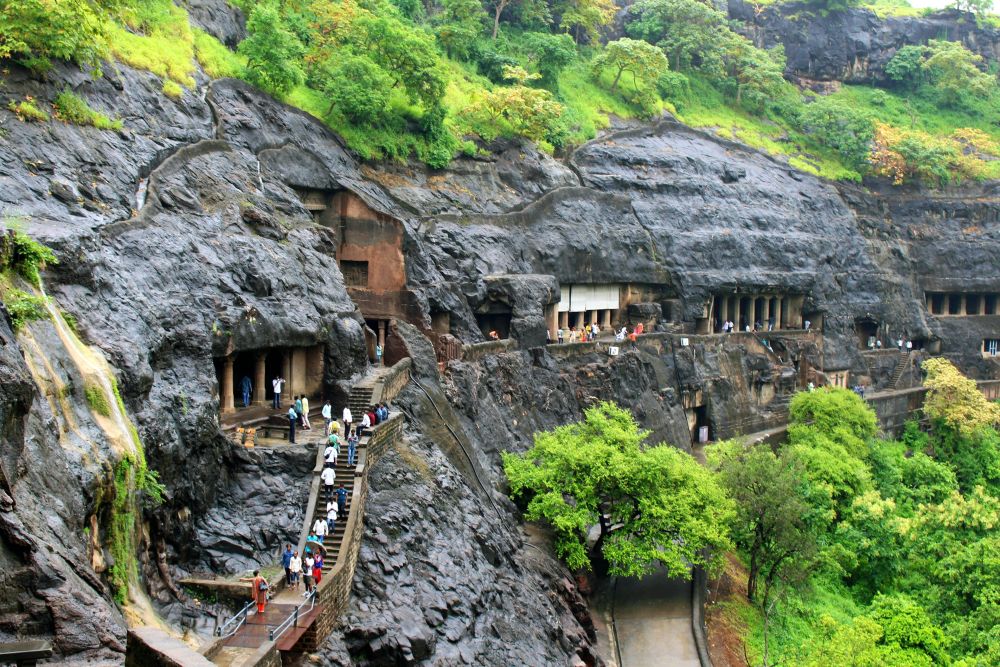

The Ajanta Caves, located in the Aurangabad district of Maharashtra, India, are one of the most significant historical landmarks that embody the ancient Buddhist traditions and artistic achievements. As a UNESCO World Heritage Site, these caves have a rich narrative which intertwines with the history of tourism in India.
The Ajanta Caves were built in two phases, the first starting around the 2nd century BCE and the second group of caves created around 400-650 CE. However, with the decline of Buddhism in India, these caves were abandoned and got shrouded in the dense jungles until their accidental rediscovery by a British hunting party led by Officer John Smith in 1819. The rediscovery of these caves marked the beginning of the site as a tourist destination, although initially, it was limited to colonial officers, historians, and a few adventurers.
In the late 19th and early 20th centuries, as railways and other modes of transportation developed, the Ajanta Caves became more accessible, sparking curiosity and pulling in travelers from around the world. Scholars from various countries began to visit Ajanta to decipher the ancient scripts and understand the frescoes and sculptures. The documentation and publication of these findings further increased international awareness and interest.
The establishment of Indian independence in 1947 paved the way for structured conservation efforts and improved visitor amenities at Ajanta. The subsequent decades saw a steady increase in domestic and international tourists, with the site becoming a symbol of India's rich cultural heritage.
Today, the Ajanta Caves offer an enriching experience for visitors. Tourists can explore a series of 30 rock-cut Buddhist cave monuments, which feature exquisite murals and sculptures that are considered masterpieces of Buddhist religious art. The caves are nested in a panoramic bend in the Indhyadri Hills which further enhances the site's allure.
To accommodate the growing numbers of visitors, the government, along with various tourism departments, has improved infrastructure, creating better roads, transport facilities, and visitor centers. Information boards, guides, and audio-visual presentations are available to educate tourists about the historical and cultural aspects of the caves.
In recent years, sustainable tourism practices have been integrated into the management of the Ajanta Caves to ensure that the increasing footfall does not negatively impact the delicate cave paintings and sculptures. There is also a shift towards creating immersive experiences through the use of digital technology, like virtual tours and augmented reality apps that allow detailed exploration of the site's art and iconography.
The global pandemic hit the tourism industry hard, and Ajanta was not spared. However, post-pandemic, there has been a resurgence in interest as travelers seek destinations rich in cultural history and open spaces. The Ajanta Caves fit this trend perfectly, and efforts are ongoing to ensure safety and hygiene for all visitors.
In conclusion, the history of tourism at the Ajanta Caves is as layered and fascinating as the artistic treasures they hold within. From a forgotten time capsule to a world-renowned tourist destination, these caves continue to captivate visitors with their timeless appeal and the stories etched into their walls.